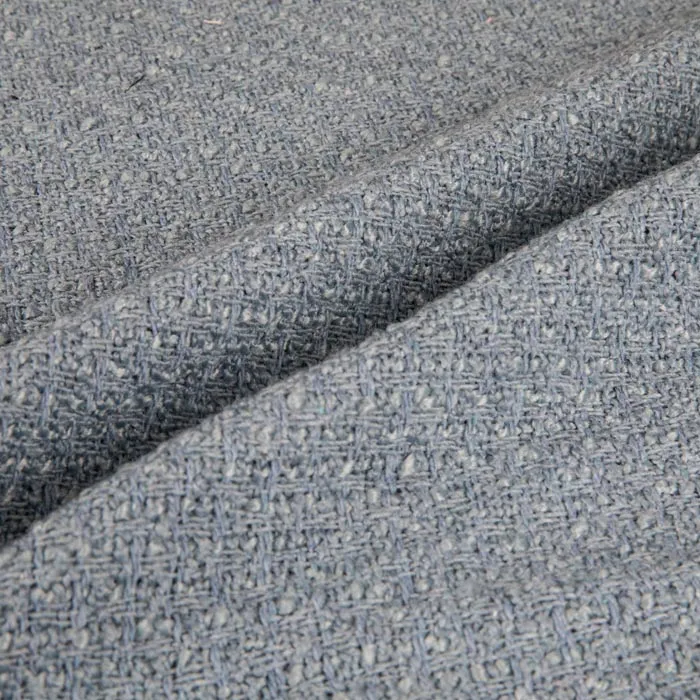 English
English Español
Español  Português
Português  русский
русский  Français
Français  日本語
日本語  Deutsch
Deutsch  tiếng Việt
tiếng Việt  Italiano
Italiano  Nederlands
Nederlands  ภาษาไทย
ภาษาไทย  Polski
Polski  한국어
한국어  Svenska
Svenska  magyar
magyar  Malay
Malay  বাংলা ভাষার
বাংলা ভাষার  Dansk
Dansk  Suomi
Suomi  हिन्दी
हिन्दी  Pilipino
Pilipino  Türkçe
Türkçe  Gaeilge
Gaeilge  العربية
العربية  Indonesia
Indonesia  Norsk
Norsk  تمل
تمل  český
český  ελληνικά
ελληνικά  український
український  Javanese
Javanese  فارسی
فارسی  தமிழ்
தமிழ்  తెలుగు
తెలుగు  नेपाली
नेपाली  Burmese
Burmese  български
български  ລາວ
ລາວ  Latine
Latine  Қазақша
Қазақша  Euskal
Euskal  Azərbaycan
Azərbaycan  Slovenský jazyk
Slovenský jazyk  Македонски
Македонски  Lietuvos
Lietuvos  Eesti Keel
Eesti Keel  Română
Română  Slovenski
Slovenski  मराठी
मराठी  Srpski језик
Srpski језик
How Do I Care for Premium Dressmaking Fabrics?
2024-10-08
When working with Premium Textiles for Dressmaking, proper care is essential to maintain the fabric’s quality, appearance, and longevity. High-end fabrics like silk, wool, linen, and fine cottons require special attention to ensure they remain beautiful and durable, whether they’re used in elegant evening gowns, tailored suits, or intricate couture pieces. Understanding how to care for these fabrics can help preserve their luxurious feel and look for years to come.

1. Storing Premium Dressmaking Fabrics
Proper storage is just as important as cleaning when it comes to maintaining the integrity of Premium Textiles for Dressmaking. Incorrect storage can lead to creases, discoloration, and even fabric deterioration.
1.1. Hanging vs. Folding
- Hanging: Fabrics like wool and silk should generally be hung to avoid deep creases. Use padded or shaped hangers to prevent shoulder distortion, and cover garments with breathable fabric bags to protect against dust and moths.
- Folding: For fabrics that are prone to stretching, like knits and heavy wool, folding is a better option. Store them in a cool, dry place, and avoid placing heavy items on top to prevent permanent creases.
1.2. Protecting from Light and Moisture
- Avoid Sunlight: Direct exposure to sunlight can fade colors and weaken fibers, especially for fabrics like silk and wool. Store garments in a dark closet or use protective garment covers.
- Control Humidity: Excessive moisture can lead to mold and mildew, especially in natural fibers. Use dehumidifiers or moisture absorbers in storage spaces to keep humidity levels low.
2. Repairing and Maintaining Dressmaking Fabrics
Over time, even the best-cared-for garments may require some maintenance, whether it’s due to wear and tear, minor damage, or general upkeep.
2.1. Repairing Snags and Tears
For delicate fabrics like silk and lace, small snags or tears can occur with regular use. It’s best to address these issues as soon as possible to prevent further damage.
- Snags: Use a needle or snag repair tool to gently pull the snagged thread back into the fabric. Avoid cutting it, as this can create a hole.
- Tears: For small tears, hand stitching with a matching thread can help repair the fabric. For more significant damage, consult a professional seamstress to avoid compromising the fabric’s integrity.
2.2. Dealing with Stains
Stains can be a challenge, especially on luxury fabrics. The key is to act quickly and use appropriate stain removal techniques based on the type of fabric.
- Silk: Blot the stain with a damp cloth and mild detergent, but avoid scrubbing, which can damage the fibers.
- Wool: Gently dab the stain with cold water. Avoid using hot water, as it can set the stain and cause the fabric to shrink.
- Cotton and Linen: For stubborn stains, use a mild bleach solution, but test it on a small, hidden area first to ensure it doesn’t damage the fabric.
3. Professional Cleaning vs. Home Care
For particularly valuable or intricate garments made from Premium Textiles for Dressmaking, professional cleaning may be the safest option. Dry cleaners have access to specialized cleaning solutions and techniques that are gentler on delicate fabrics.
- Dry Cleaning: Ideal for silk, wool, and embellished fabrics. Be sure to choose a reputable cleaner experienced in handling luxury fabrics.
- Home Care: For cottons and linens, home care is often sufficient as long as the proper techniques are followed. Always consult the care label before deciding how to clean your garment.
4. Ironing and Steaming
Wrinkles are inevitable, but knowing how to handle them without damaging the fabric is crucial.
4.1. Steaming
For most delicate fabrics like silk, wool, and fine cottons, steaming is the preferred method of removing wrinkles. A steamer is gentler than an iron and helps preserve the fabric’s natural drape without applying direct heat.
4.2. Ironing
When ironing is necessary, always use the lowest heat setting appropriate for the fabric and avoid direct contact with delicate fibers. Use a pressing cloth between the fabric and the iron to protect the material, especially for sensitive textiles like silk or satin.
Caring for Premium Textiles for Dressmaking involves more than just proper cleaning and storage; it’s about preserving the beauty, texture, and integrity of the fabric over time. Whether it’s silk, wool, linen, or high-quality cotton, each material requires special attention to ensure it remains in excellent condition.
By following the right washing, drying, and storage practices, you can extend the life of your premium garments, keeping them looking fresh, vibrant, and luxurious for years to come. Whether you're caring for a custom-made gown or a beautifully tailored suit, these tips will help you maintain the elegance and quality of your favorite pieces.
Zhejiang Jufei Textile Co., Ltd. has been focusing on the field of polyester woolen fabric. After more than 10 years of development and growth in polyester woolen fabric industry, we have developed from domestic company named Shaoxing Ruifeng Textile Co.to now facing the international market which is a scientific, industrial and trade enterprise integrating development, production, sales and trade. Our main products are: woolen fabric, knitting fabric, woven fabric, polyerster woolen fabric, knitted woolen fabric, artificial wool fabric. Explore our full range of products on our website at https://www.jufeitextile.com. For any inquiries, please reach out to us at ruifengtextile@126.com.
-
E-mail
-
Call Us
-
Address
Guancheng International Keqiao Shaoxing, Zhejiang, China
If you have any enquiry about quotation or cooperation, please feel free to email or use the following inquiry form. Our sales representative will contact you within 24 hours.
Copyright © 2022 Zhejiang Jufei Textile Co., Ltd.- Woolen Fabric, Knitting Fabric, Woven Fabric -All Rights reserved.





